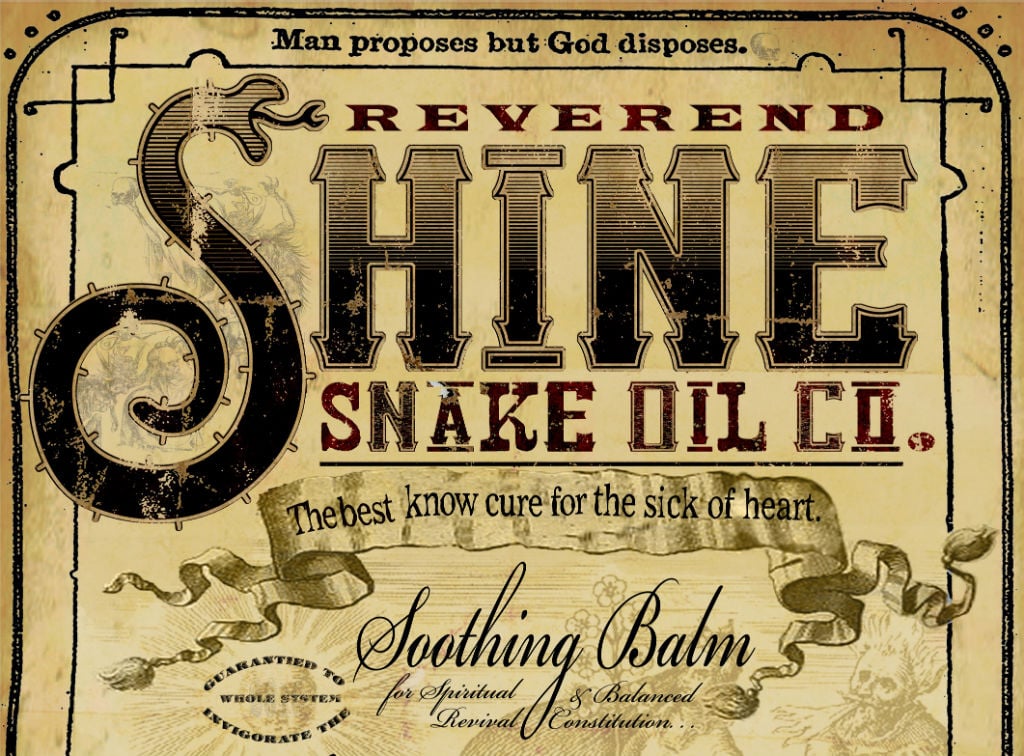
A brief history of modern sales methodologies for sales leaders
Before psychology selling, before needs and pains and solutions and strategies, there was phrenology: The science of selling cars based on the size of a customer’s forehead. No wonder car salesmen gained a bad reputation.
Fortunately for customers and sales teams alike, salesmanship has come a long way since the 1800s and early 1900s, when peddlers promoted fake snake oil to cure what ails.
From the 1920s through the 1950s, sales methodology took a number of twists and turns including psychological selling (which promoted the idea that the best salespeople were those who understood how buyers “tick”), relationship selling (of which Dale Carnegie’s How to Win Friends and Influence People approach was the flagship), and barrier selling (which encouraged practitioners to trick the customer into saying “yes”).
In the 1950s, formula selling became popular, and is still used by telemarketers and door-to-door salespeople everywhere. AIDA (which stands for Attention, Interest, Desire, Action) is perhaps the most famous formula, encouraging salespeople to grab the buyer’s Attention, stimulate Interest in the product, induce Desire to own the product, and move them to take Action.
Though a great deal happened for sales in these early decades, the 1960s is when it really gets interesting in terms of modern, complex sales methodologies. During this decade, Xerox Corporation invested several million dollars in the development of a “Needs Satisfaction” approach, also now referred to as “solution selling.” This, the first of the modern complex sales methodologies, was so successful that Xerox packaged and sold it to other corporations, under the name of Professional Selling Skills.
What followed was a proliferation of new methodologies, many of which have continued in use ever since. Here's a list of the most popular sales methodologies for complex sales and when they were created:
- 1967 Sandler Selling System
- 1978 Miller-Heiman, Strategic Selling
- 1988 Solution Selling (SPI)
- 1988 SPIN Selling
- 1991 Value Selling (as ValueVision Associates)
- 1993 Customer Centric Selling
- 2002 RAIN Selling
- 2005 Baseline Selling
- 2011 The Challenger Sale

The history of salesmanship
Prior to the 1960s, sales methodology often consisted of manipulative techniques designed to “trick” customers into purchasing. As this useful infographic from Hirevue demonstrates, the particular tricks used were often in response to very real marketplace changes such as competition, economic depression, and the advent of mass media:
In the 1960s, Xerox Corporation, which had thrived for several decades on the strength of a dry photocopying patent, reached the end of its patent. This event opened the market for major competition, leading to significant loss of market share.
In response, Xerox’s leadership invested tens of millions of dollars in developing a more effective sales methodology. This methodology operated on the idea that people don’t like to be sold things, but they do like to buy—a concept that is present in nearly every modern-day sales methodology.
Called the “Needs Satisfaction Selling” method and later dubbed “solution selling,” the approach was highly successful for Xerox. Sales leaders at Xerox saw an opportunity to package and sell the methodology to other organizations, which they did under the Professional Selling Skills brand through their Xerox Learning Systems division.
Several of today’s top sales methodologies were founded by salespeople and sales leaders who were engaged at Xerox during this time period, including Mike Bosworth, Neil Rackham, and Lloyd Sappington. These individuals leveraged the potential and power of Xerox’s approach and updated their own approaches to create Solution Selling (a trademark of SPI, differentiated from generic “solution selling” by capital letters), SPIN Selling, and Value Selling, respectively.
More or less simultaneously, salespeople in other marketplaces were uncovering similar insights into effective selling. Notably, David Sandler was selling motivational materials and realized that the old “trick-based” methods weren’t working for him. He went to the emerging science of psychology to develop new approaches, which ultimately became the Sandler Selling System, which is still widely used today.
Meanwhile, Steve Heiman was selling for IBM and Bob Miller was at Kepner-Tregoe. They later looked to logic and analysis to develop a “win-win” sales approach that is alive and well in the Miller-Heiman Corporation and its patented Strategic Selling methodology.
In 1993, John Holland and Frank Visgatis brought forward a new methodology in response to yet another change in the marketplace. According to Holland and Visgatis, the now-established solution sales methodologies had failed to keep up with the fact that most technology buyers were more educated than previously, and were no longer buying disruptive technologies. The language and approach had to change, and their methodology, called Customer Centric Selling is currently deployed in hundreds of organizations around the world.
In 2002, Mike Schultz and John Doerr saw a need for a research-based approach to selling, that took into account the results of a major benchmark study showing what buyers want and need from sellers. Today, RAIN Selling continues its focus on updating and optimizing the sales system based on the latest research.
In 2005, Dave Kurlan brought forward a new approach called Baseline Selling. Kurlan suggested that while solution-based selling methodologies have a great deal to offer, they are limited by the complexity of implementing them. His methodology, called Baseline Selling, took all the best things about existing methodologies, and reworked them into a simple framework that uses a baseball metaphor to help salespeople more quickly grasp and implement the methodology.
The next big popular sales methodology introduction came with the publication of The Challenger Sale by Matthew Dixon and Brent Adamson in 2011. Dixon and Adamson propose that the Internet and content marketing has changed the sales landscape once again, by placing customers in charge of designing their solutions. Where solution selling methods focus on helping the customer to build a solution, the Challenger Sale approach is designed to disrupt the customer’s buying process by uncovering un-recognized needs, and position the seller as the best resource to fulfill those needs.
As discussed in this article, the debate continues as to whether The Challenger Sale approach is a genuine revolution, just another way of approaching the same problem, or even a dangerous distraction from beneficial sales methods.
Regardless of the outcome of that debate, one thing that every sales strategy agrees on is that the sales approach is only as effective as its implementation. Along with the evolution of sales process and methodology, technologies have continued to evolve to support and reinforce implementation.
The latest technologies, like Membrain, allow sales teams to build milestones and steps into their CRM, along with training resources, content assets, and seller checklists to help salespeople get the most out of their sales methodologies. If you would like to see the differences of the latest technologies check out this side-by-side comparison of the most popular CRMs.

By George Brontén
George is the founder & CEO of Membrain, the Sales Enablement CRM that makes it easy to execute your sales strategy. A life-long entrepreneur with 20 years of experience in the software space and a passion for sales and marketing. With the life motto "Don't settle for mainstream", he is always looking for new ways to achieve improved business results using innovative software, skills, and processes. George is also the author of the book Stop Killing Deals and the host of the Stop Killing Deals webinar and podcast series.
Find out more about George Brontén on LinkedIn








